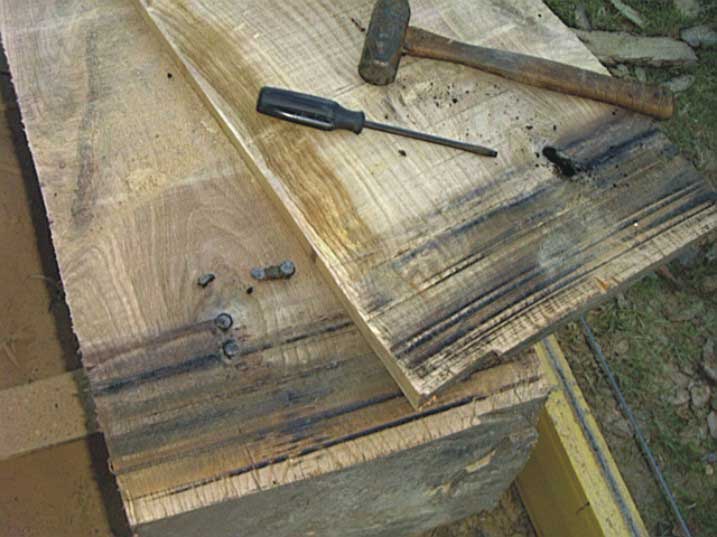Resawing Old Beams With Nails
No bandmill blade is designed to cut metal, but experience says some will do better than others. July 12, 2005
Question
I am wondering what the best blade would be to use without having to pull out all of the nails in some beams that were hand hewn in the early 1700's. I want to use them for other purposes, and was wondering if anyone has any suggestions?
Forum Responses
(Sawing and Drying Forum)
From contributor B:
There is no blade that will do what you want on a standard band mill. The problem is blade speed. Standard wood cutting bandmills run at a speed that is way too fast for cutting metal. Slamming into nails, especially old cut nails from the 18th century, destroys teeth. As far as I know, no one has every re-pullied a mill to run slow enough to tackle metal.
From contributor J:
We use cobalt blades. I would advise to pull as many nails as you can before you saw. They can be used if you don't de-nail, and if not just buy a bunch. We can normally hit about 5-10 of the old cut nails a blade before it needs to be re-set and re-sharpened.
From contributor B:
To contributor J: Can you re-sharpen them yourselves, or do you have to send them out because they're cobalt?
From contributor S:
I'm re-sawing some old pine beams for a customer. He had his crew remove all the easily visible nails, but not all of them. I use bi-metal pallet dismantling blades. I keep my feed rate slow so as not to hook any nails.
From contributor J:
To contributor B: We do not sharpen in house, but the fellow that sharpens them for us does not use any special equipment. He says that he just has to make more light passes instead of the 1 or 2 on normal blades, so as not to heat the gullet up to much.
From contributor B:
Contributor J: Roughly how many regular steel nails can you go through before the blade says no more?
Contributor S: I tried bi-metal and found it a little better, but not much better than carbon steel, with the advantage of carbon being that I could re-sharpen myself.
From contributor R:
Theses beams are from my parents’ house, and my brother has torn down and rebuilt it. We take all the nails out that we can see and try and find the others with a metal detector, but still a few are hiding. So I’m looking to find something that would take a few more hits than double hard blades
From contributor I:
The picture below is a good example of when to change the blade. What’s below is a 1/2" j-bolt, 8" inside of a 32" oak. My mill stopped feeding, so I added more pressure to the hydraulic and it cut right through it. It took every second tooth off the blade.

Click here for full size image
From contributor V:
I've had best results with a bi-metal blade. The smallest tooth spacing you can run, the better. I really dislike doing this, but have a few times. The customer has to buy a blade or two, depending on the job. The last one I got was $70. The bi-metal with the right pitch and speed will cut steel plate on my vertical bandsaw, but I wouldn't try it with a 3/4 or 7/8 tooth spacing.
One thing I worry about is all the sparks. My mill has a blower to get the sawdust out (it’s a barn, and not portable). Most beams and old lumber are dry - I've never had a fire, but I can see the potential for one. When I finish sawing these, I always hang around for a while just in case one is smoldering in there.
